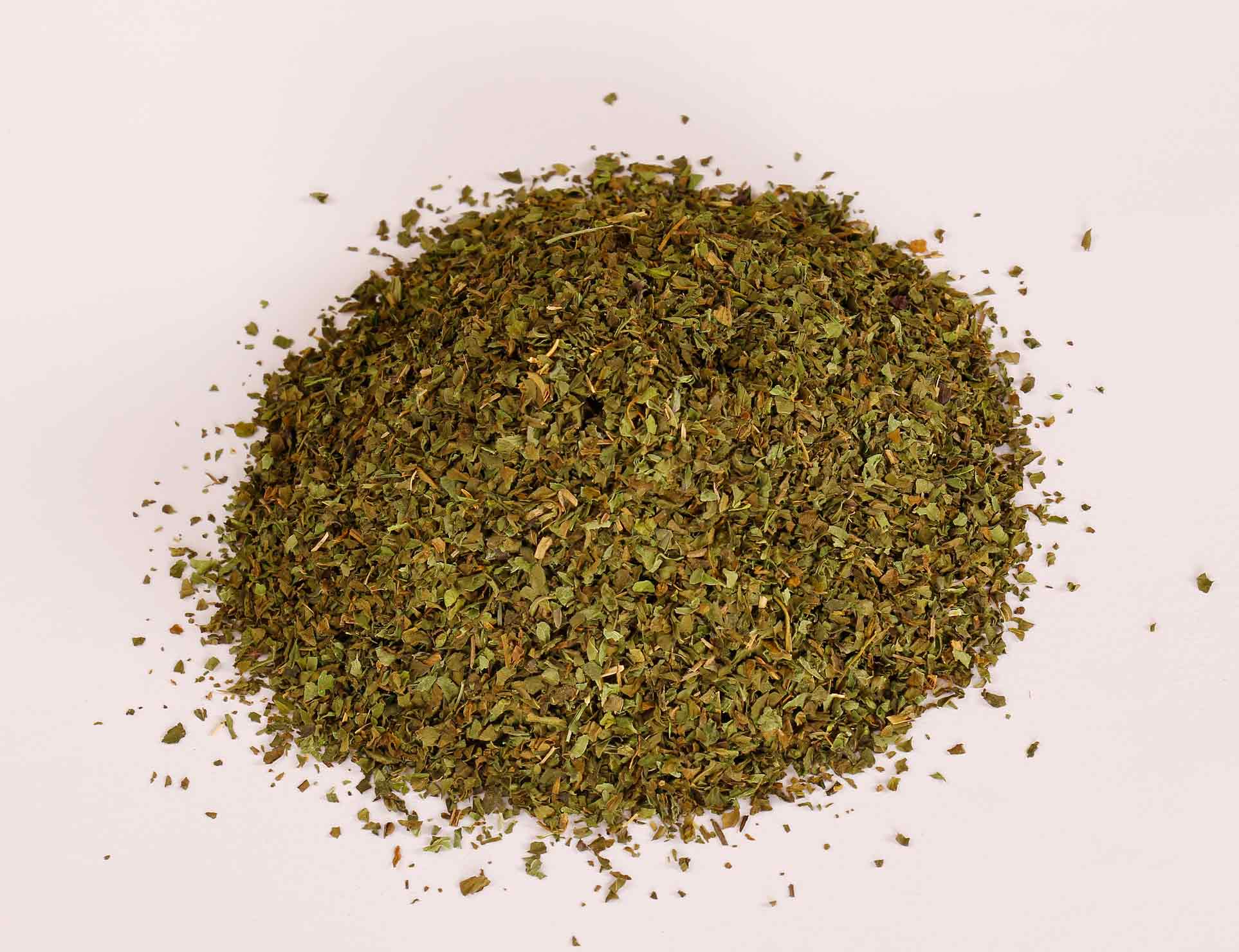Name: dried Peppermint leaves
Family: Lamiaceae
Botanical name: Mentha piperita
What is Peppermint?
Bulk dried peppermint is a perennial herb with an energetic smell. It’s also called as “Mentha balsamea willd”. The native regions of cultivating peppermint are Europe and the Middle East. And nowadays we can find it in many places all over the world.
What is the description of peppermint in Botany?
Peppermint is a long lasting grassy herb. Its length reaches about 30 to 90 cm. And it has a soft stem.
Peppermint contains dark green leaves including red veins, with length of 4-9 cm, and width of 1.5-4 cm. The margins of these leaves are rough jagged with a sharp tip.
Peppermint has purple flowers with length of 6-8 mm. The flowers contain corolla of four cloves with diameter of 5 mm.
Peppermint grows quickly as soon as its buds appear.
What are the chemical components of Peppermint?
Peppermint contains a large percent of menthol.
peppermint oil includes many chemical components such as menthone, carboxyl esters, and menthyl acetate
Volatile oil is a common component in dried peppermint. It is existed by 0.3-0.4% in dried peppermint. It includes amounts of menthol by 7-48%, menthone by 20-46%, menthyl acetate by 3-10%, menthofuran by 1-17% and cineol 1, 8 by 3-6%.There are few quantities of limonene, caryophyllene , pulegone, and pinene in the oil of peppermint.
There are terpenoids and flavonoids in peppermint including hesperidin, eriocitrin, and kaempferol 7-O-rutinoside.
Menthol and Menthone are the basic ingredients of peppermint oil. They are existed with percentages of 40.7% and 23.4%.
What are the uses of peppermint?
We can use fresh and dried leaves of peppermint in making useful herbal tea.
Due to its distinctive flavor and smell, peppermint is commonly added to make ice cream, fruit preserves, alcoholic beverages, candy, and gums.
Peppermint is also used as an aromatic component in the production of some health care products such as toothpaste, shampoos, soaps and skin care goods.
What are the benefits of peppermint tea?
- Peppermint tea helps to cure colic for infants.
- Peppermint-leaf tea works to prevent sensitive nose infections and relieve the symptoms of hay fever.
- The unique scent of peppermint leaf can stimulate memory, create sense of recovery and refresh.
- Peppermint can protect from prostate cancer due to its rich content of menthol.
- Peppermint can prevent the bad effects of radiation on cells death and DNA damage.
- Peppermint can fight against herpes simplex virus type which Resist drug.
- Peppermint helps to treat asthma and prevent inflammation due to its content of Rosmarinic acid.
What are the uses of peppermint oil?
- Oil of peppermint help to relieve the symptoms of irritable bowel syndrome for children and adults.
- Oil of peppermint can treat the inflammation of tuberculosis. It also helps to resist and prevent recurrence of the disease.
- Oil of peppermint can decrease nausea caused by the chemical remedy with low costs.
- Oil peppermint can work as a dental lotion and fight against the biofilm formations that related to cavities of teeth.
- Powder of peppermint leaves can be used to refresh breathing and clean teeth.
- Oil of peppermint help to treat symptoms of respiratory diseases such as cough, cold, and nasal congestion. It also can purify the respiratory tract.
The Value of peppermint for Ancient Egyptians:
Northern Africa and the Mediterranean were the native regions for cultivating Peppermint in old Egypt.
Ancient Egyptians used peppermint as a remedy to relieve stomach pains. This tradition has been mentioned in Ebers Papyrus dated to 1550 BC.
Ancient Egyptians used peppermint as a coin due to its high value.
Egyptian pyramids contained dried leaves of peppermint dated to 1000 BC.
More related articles:


